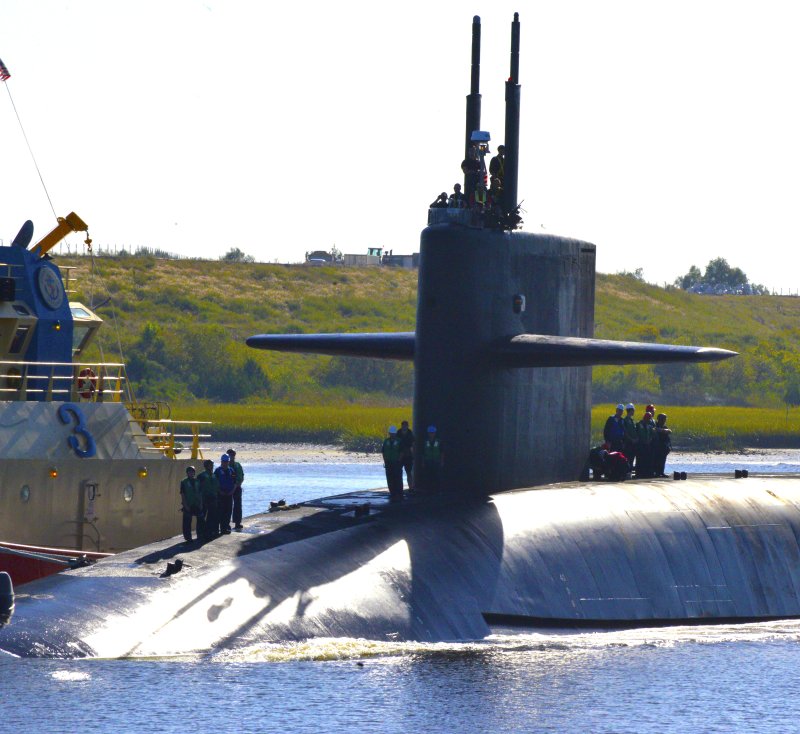The W76-2 nuclear warhead was first deployed with the USS Tennessee, pictured, late last year. File Photo by Mass Communication 2nd Class Bryan Tomforde/U.S. Navy/UPI
Feb. 4 (UPI) -- The U.S. Navy has deployed a new tactical, submarine-launched nuclear missile that it considers vital to countering potential threats from Russia, the Pentagon said Tuesday.
Undersecretary of Defense for Policy John Rood said a small number of the W76-2 warheads have been sent into the field as a strengthening measure against "potential adversaries, like Russia, [who] believe that employment of low-yield nuclear weapons will give them an advantage over the United States and its allies and partners."
President Donald Trump called for the new weapon in 2018, saying they're needed as a response to Russia increasing its own arsenal of low-yield, tactical nukes. The new warhead produces a blast equivalent to about 5-7 kilotons of TNT.
The goal, Rood said, is to show "there is no advantage to limited nuclear employment because the United States can credibly and decisively respond to any threat scenario."
Analysts say a primary U.S. concern was that Russia may be tempted to use its growing stockpile, knowing the United States wasn't capable of responding on the same level. Critics say the Pentagon's move only increases the likelihood of all-out nuclear conflagration.
A bi-partisan group of former U.S. officials, including former Defense Secretary William Perry and former Secretary of State George Schultz, urged Congress two years ago to reject funding for low-yield nuclear weapons.
"Perhaps the biggest fallacy in the whole argument is the mistaken and dangerous belief that a 'small' nuclear war would remain small," they said. "There is no basis for the dubious theory that, if Russia used a 'low-yield' nuclear weapon and the United States responded in kind, the conflict could stay at that level."















